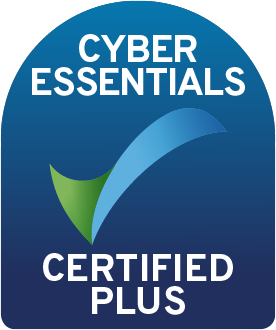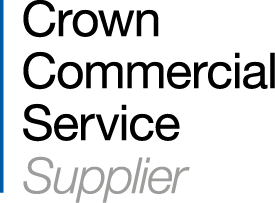How multi-tenancy will elevate your multi-branding functionality
Moodle users looking to upgrade to Moodle 4.1 will no longer receive multi-branding support once they have upgraded. As our services evolve and we look towards moving away from our multi-branding offering, we want to give clients wishing to retain their multi-branding functionality the opportunity to explore a more comprehensive alternative option. For these clients, multi-tenancy is essential as it offers the same multi-branded effect, but also elevates it with additional powerful, flexible tools and features.
What is multi-tenancy?
Multi-tenancy allows you to create and manage multiple independent learning environments, known as ‘tenants’, within a single LMS solution. The tenant is made up of a group of users who share common access and privileges, along with content that is customised to each tenant.
Using multi-tenancy allows an organisation to deliver a customised and personalised learning experience. Various departments or subsidiaries within an organisation can use the same LMS to access and maintain their own separate and secure virtual learning environments, in the form of tenants.
There are many reasons why an organisation will benefit from using an e-learning platform with multi-tenancy. For example, an organisation with an extended enterprise model can deliver L&D that is specific to each unique brand or business. On a smaller scale, a business may simply wish to customise their e-learning platform to each department or users joining from outside the organisation, such as customers.
With a multi-tenant LMS, an organisation can expand its audience to include customers, volunteers, channel distribution partners, resellers or product and service end-users and tenant admins can determine exactly how each user experiences the LMS. Experience capabilities include; multi-portal functionality, eCommerce, custom branding and customisable hierarchies.
How does multi-tenancy differ from multi-branding?
Our multi-branding service was created for Moodle users who were looking to create some differentiation for different sets of users on a single site. While multi-tenancy allows an organisation to create and manage multiple independent learning environments within a single LMS solution, multi-branding is limited to visual aspects and some navigation capabilities. With Moodle’s limited functionality (compared to an LMS such as Totara) multi-branding was created as a workaround, enabling users to provide some elements of the type of functionality that multi-tenancy offers.
Multi-branding features, depending on which edition you had, allowed for different custom menus, frontpage sliders, quick links and footers. Additionally, the branding elements could be customised for specific groups, such as fonts, colours and logos.
Much like multi-branding, a tenant site with multi-tenancy functionality can have its own unique branding and customised appearance but also its own unique library of content. Additionally, global site administrators can choose to include core content, made available across all tenants (e.g., training on company policies) – this can easily be managed and updated
Multi-tenancy allows organisations to create and assign additional roles so that tenants can be managed on an individual basis – meaning the responsibility of managing all tenants doesn’t sit with one site administrator. Tenant user managers can monitor and manage users within a specific tenant – they can manage user profiles, roles and permissions, assign courses and programmes, along with monitoring learner progress.
Multi-branding vs multi-tenancy feature comparison table:
.png?width=1478&height=831&name=Available%20features%20and%20functionality%20(1).png)
Why use multi-tenancy?
L&D for multiple groups within an organisation
With multi-tenancy, learning and development can be personalised to suit the needs of each unique group, with separate branding and content. As a result, tenants can be created to support organisations with complex structures, supporting extended enterprise business models, umbrella groups with multiple brands, along with partner or vendor networks, and much more. Tenant sites can also be used to support learning groups such as various departments within a business or school year groups.
Cost-effective
Multi-tenancy has cost-saving benefits as an organisation doesn’t require multiple LMSs to create multiple learning environments.
Offers scalability
Multi-tenancy allows L&D managers to add or remove tenants as needed as an organisation grows and user preferences and requirements change – as can the structure of the learning environment.
Centralised management of L&D
With robust reporting and analytics, L&D managers can centrally manage all learning environments from a single location. Reports can be created at a tenant level, looking at tenant activity, or at site level, allowing managers to easily monitor and manage site-wide learning progress.
Multi-tenancy also allows admins to delegate LMS management. With multiple admin options, tenants can be managed on an individual basis rather than by a single site administrator.
How can I take advantage of multi-tenancy?
For those looking to enable multi-tenancy and take advantage of its many benefits, our Totara learning solutions boast complex and flexible multi-tenancy features. Our Totara solutions with multi-tenancy functionality include:
Totara Learn
The essential Totara LMS, Totara Learn is a transformational enterprise Learning Management System where e-learning comes into its own. Whether for compliance training, employee induction and onboarding, or CPD, Totara Learn has all aspects of organisation learning covered.
Totara Engage
Building on the strengths of the Totara LMS, Totara Engage is a distinct LXP with engagement and collaboration at its core. Encouraging team collaboration, personalised learning and social engagement, Totara Engage is the perfect addition to the more formal e-learning facilitated by Totara Learn.
Totara Perform
While all Totara platforms contribute to performance management outcomes, Totara Perform is a dedicated Performance Management System providing agile and precise tools to deliver organisational performance growth.
Additionally, our Totara TXP platform combines all three platforms in one unified talent experience platform. Find out more about our Totara platforms by reading our ultimate guide to Totara, here.
Contact your AM for more information
Multi-tenancy offers the additional features that many organisations already using multi-branding are looking for. If you’re ready to elevate your multi-branding by adopting a powerful e-learning solution with multi-tenancy, get in touch with your AM to find out more.






.png?width=1080&height=520&name=Blog%20CTAs%20(16).png)